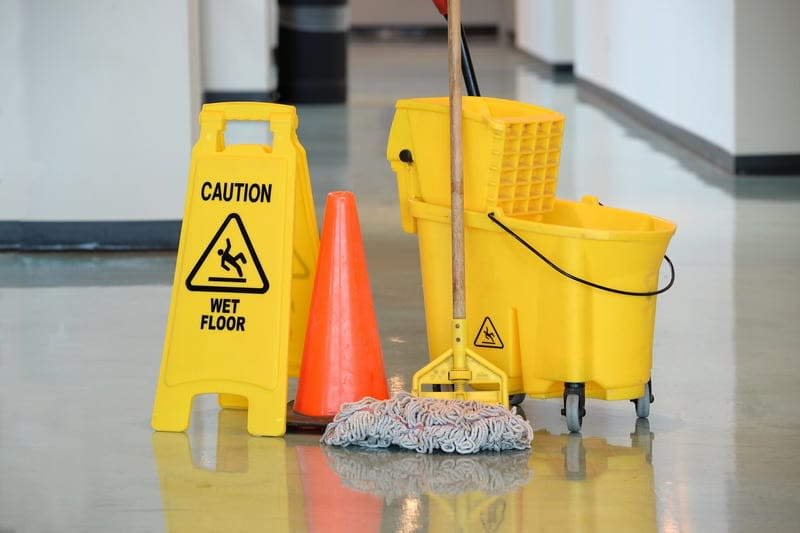
Wet mops are some of the products we carry in our floorcare inventory. We provide wet mops to restaurants, property-management companies, industrial operations, healthcare facilities and more. They are used to clean everything from kitchen floors to warehouses.
The thing about wet mops is that their performance depends a lot on how they are used. Are you struggling to get the results you expected from your wet mops? If so, it could be that you are making one or more of the mistakes listed below. Avoid these four mistakes and you should see better results.
1. Not Using Enough Water
The basic idea behind wet mopping is to use water and a cleaning solution to remove dirt and stains. But for this to work properly, you have to use enough water to actually get the floor wet. Wet mopping is the process of wetting the floor, allowing the water and cleaning solution to do what they do and then soaking up the water and dirt.
Failing to use enough water could mean simply pushing dirt around on the floor without actually picking it up. It could also mean not cleaning away those persistent stains. In short, you have to use enough water to loosen things up.
2. Using Too Much Water
You can have too much of a good thing when it comes to wet mopping and water. You will know you are using too much water if it takes three or four passes to soak up the water you spread around.
Under typical conditions, you wet your mop and then spread the water it holds across the floor. You then rinse out the mop and wring it as well as you can. Then you run the mop head across the water you just spread. You should be able to soak up all the water in one or two passes.
3. Not Sweeping or Dust Mopping First
A wet mop is designed to pick up dirt and stains that will not come up with a broom or dry mop. It is not intended to be used on loose dirt and debris. That’s what brooms and dust mops are for. Before you fill the mop bucket with water, take a broom or dust mop to your floor. Get up all the loose dirt and debris so you’re not pushing them around with the wet mop.
4. Not Cleaning Your Mop and Bucket
Finally, a lot of people make the mistake of not cleaning their mop heads and buckets. This is something that should be done after each and every use. You clean the mop head simply by rinsing it in clean water and wringing it out. Then you hang it up to dry. Clean the mop bucket and wringer by rinsing them with clean water. Alsco also professionally cleans mops.
Why is this necessary? There are a couple of reasons. First, not cleaning mop heads and buckets could lead to rancid odors. All the filth removed from the floor ends up sitting in the mop head and wringer apparatus, where it promotes mold and bacteria growth. A couple of days later it could smell so bad that the odor becomes overwhelming.
Second, rinsing out mop heads after each use actually extends their life. Rinsing removes dirt, debris and cleaning chemicals that would otherwise take their toll on the threads that make up the mop head.
Are you making any of the four wet mop mistakes explained here? If so, you now know what you should and should not be doing. Avoid these mistakes and you will find that your mopping efforts get better results.
